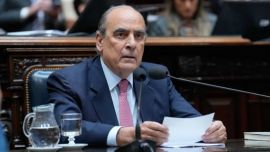While fares in general have risen, prices depend greatly on the distance travelled. On buses, the average jump is around two pesos, from six pesos to eight pesos, for example with steeper inclines for those travelling further. Train fares follow a similar path, for example rising by 1.5 pesos on shorter distances and up to two pesos for longer journeys. “Subte” or underground rail services, remain the same for now but will rise to 11 pesos come April.
The Transport Ministry’s new program, Red SUBE, also kicked-off on Thursday. Red SUBE is a multimodal ticket that integrates buses, trains, and the “subte”. With this, up to five different transit combinations can be made in the span of two hours. The base fare will be reduced by 50 percent on the second ride, and 75 percent on the third and subsequent rides within the two-hour window.
Red SUBE was started with the intention of reducing the total fare paid over time by people who take multiple forms of transit within a certain time period. Some, however, are not too enthralled by the price increases.
“We’re paying higher rates for electricity while not having service. There was a 66 percent in energy cuts and suspiciously related to Edesur and Edenor. The Government failed from the point of view of its residents and the consumer. The beneficiaries were the businesses that had earnings of up to USD$7400 million without having to pay a single peso,” warned Osvaldo Bassano, president of the Association of Defending the Rights of Users and Consumers (ADDUC), in an interview with Página 12 on Thursday.
Aside from public transportation, taxi fares and street parking also saw hikes go into effect, with the base rate up to 39.10 pesos from 32.60 pesos, and the meter interval increased to 3.91 pesos instead of 3.26 pesos. Street parking is up to 10 pesos from eight pesos.


















Comments